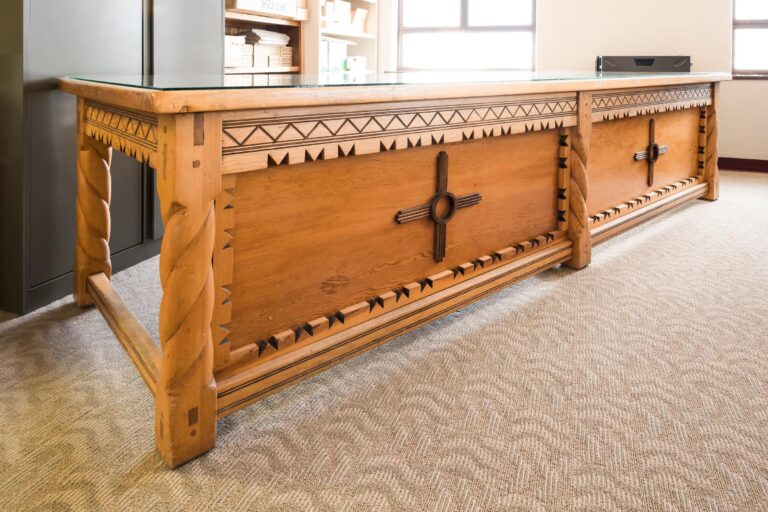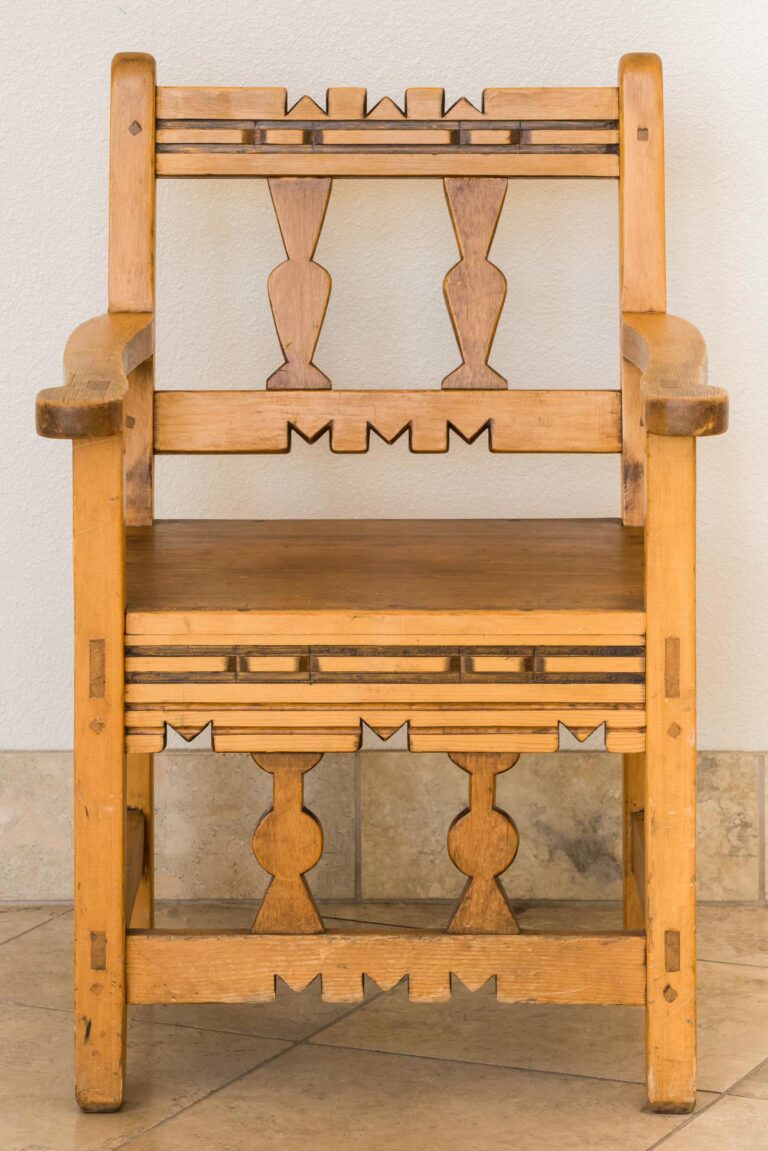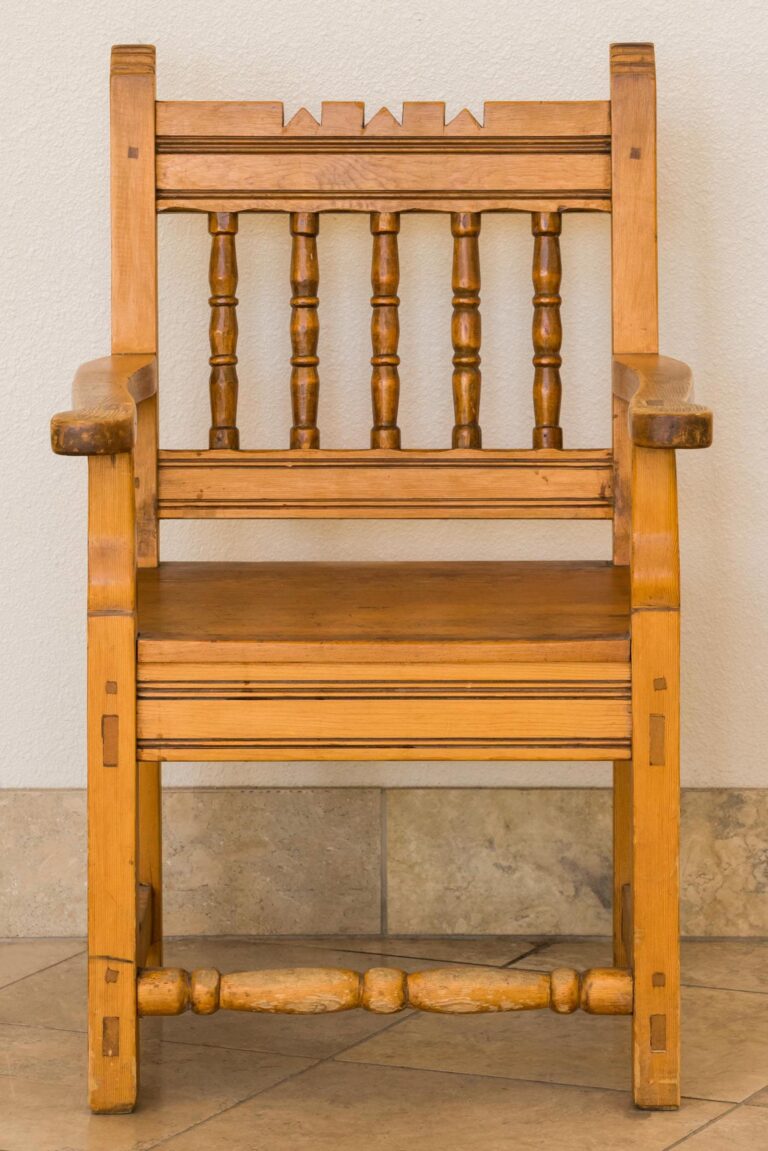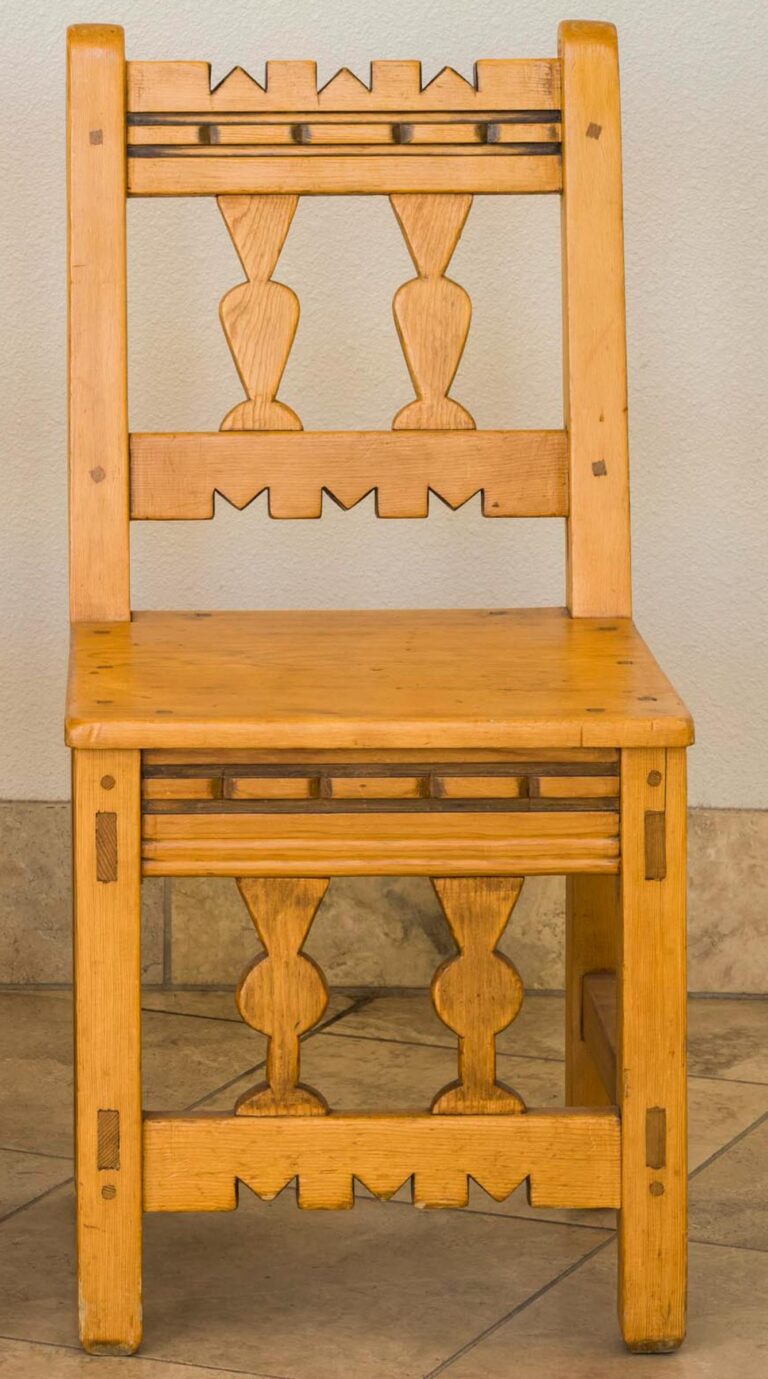Elidio Gonzales was an esteemed artist, furniture-maker, and businessman. Per his obituary, highlights of his career include making “the doors for the Santuario de Chimayo [a shrine and pilgrimage site in Chimayo, NM], [being] selected to do the entrance doors for the entrance to the Hispanic Heritage Wing of the Museum of International Folk Art in Santa Fe and [making] furniture and woodwork for famous artists and writers.”1
Gonzales got his start as a carpenter and artist during the New Deal. Having grown up in Mora and Black Lake, NM, where his family ran a sawmill, he moved to Taos in 1934 to attend the Taos Vocational School. “I learned the Spanish Colonial designs at the school and within three months I was an instructor . . . I was a participating artist in the WPA [Works Progress Administration] work project in the ’30s,” he told The Taos News in 1985.2
During World War II, Gonzales served for three years in the US Army as a woodworking instructor for army rehabilitation programs. In 1945, he opened El Artesano de Taos, a hand-crafted furniture business. According to scholar Guadalupe Tafoya, “The red and yellow sign that hung outside of his shop . . . is familiar to anyone who ever walked or drove along La Loma Road [in Taos]. Elidio produced museum-quality pieces for clients all over the Southwest. He had enormous influence on the style of furniture being produced in Taos, favoring the rosette, with designs that were very clean and sharply etched.”3 Gonzales was known as “El Maestro,” or a Master Carver, and mentored many next-generation furniture-makers.
Despite his widespread recognition and enormous influence, Gonzales’s first print media mention as an artist—according to the available archives—only came in 1961,4 and his first full print media profile appeared in 19665 —more than thirty years into his career (a 1945 newspaper article6 listed him as a member of the “arranging committee” for that year’s Christmas Handicrafts and Art show at the Harwood Museum of Art, but did not identify Gonzales as an artist himself). The art world’s bias against furniture as “fine art” prevailed over the course of his fifty-four years in the business, but Gonzales’s talent and dedication were undeniable and his commitment to education—not only did he teach woodworking, he did many public demonstrations and talks throughout his career—made him an effective advocate for his craft.








